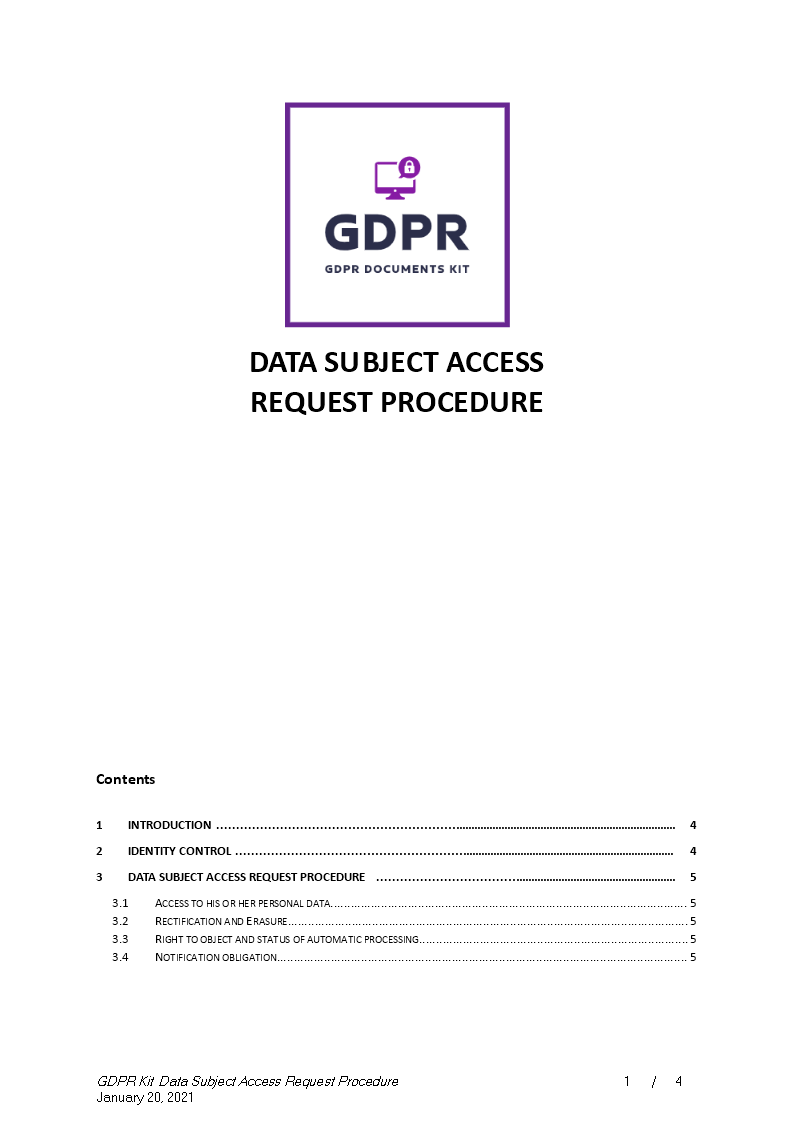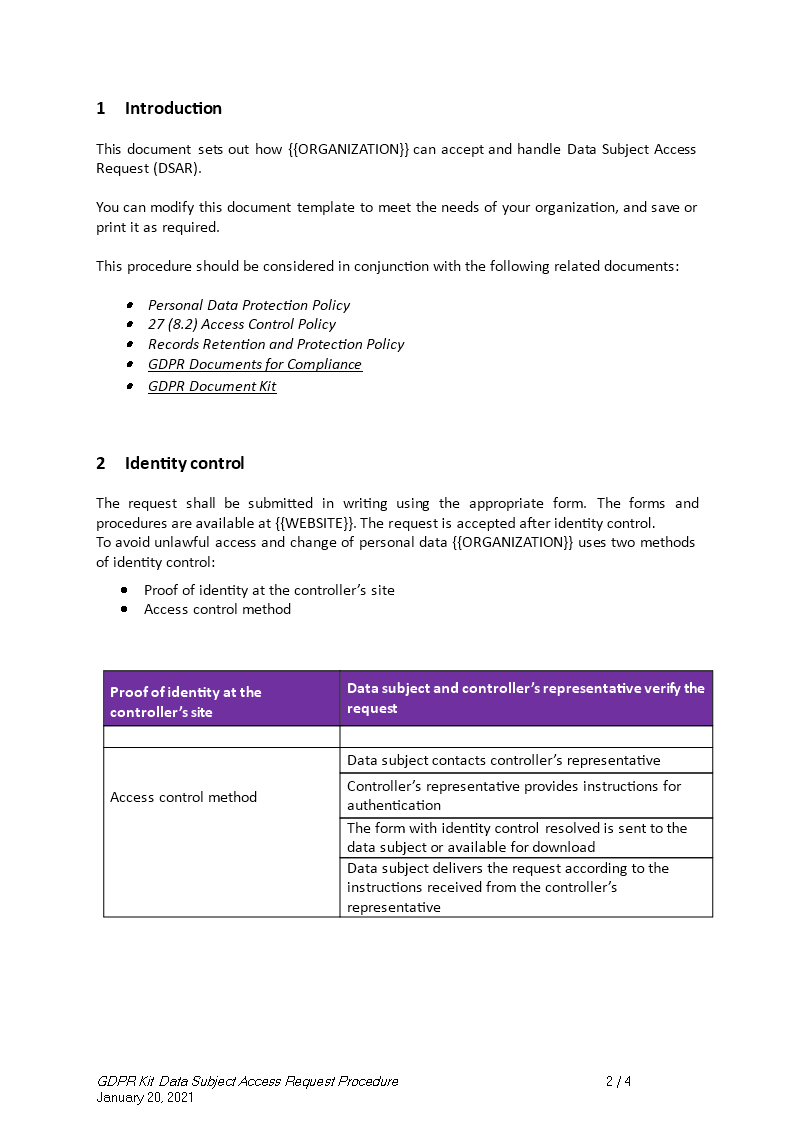Data Subject Access Request Procedure
Review Rating Score
According to the EU GDPR, you are required to identify and minimize the data protection risks of your organization. The documentation of processing activities is a legal requirement under the EU GDPR, which also probably your organization needs to comply with. It's therefore highly important that you document your data processing activities and that you also support good data governance, and help you to demonstrate your compliance with other aspects of the GDPR. This Data Protection Impact Assessment (DPIA) Log registers those steps and lists all of the documentation, policies, and procedures you have. This way, if you keep track of those steps taken, it helps you to become GDPR compliant. This DSAR template is an example of how you can record your DPIA process and outcome.
What is Data subject request?
The EU General Data Protection Regulation came into place in 2018. The regulation, which replaces the 1995 Data Protection Directive, makes changes to the way data is handled and processed in the EU. It is a legal framework that sets the exact guidelines for the collection and processing of personal information from any individuals who live in the EU. This means EU citizens can send a Data Subject Request (DSAR) when they will refer that they are using their rights under GDPR to request for a copy of the Personal Data that your organization holds on them, or details of what data is held for and its source. A DSAR does not have to reference GDPR, the term “Data Subject Access Request” or any legislative rights.
Why GDPR is important for companies outside the EU?
First of all, GDPR isn’t exclusively enforceable on EU-based companies. The regulation affects organizations both inside and outside of the European Union (EU). Any organization dealing with EU businesses, residents, or citizens’ data will have to comply with the GDPR! The regulations make it very clear that all organizations handling such data will be required to comply, regardless of location or jurisdiction.
Since the Regulation applies regardless of where the organization is based, you will also need to ensure your website is GDPR proof if that website attracts European visitors, even if you don't specifically market goods and/or services to EU citizens.
Articles 12, 13, and 14 of the GDPR provide detailed instructions on how to create a privacy notice, placing an emphasis on making them easy to understand and accessible. If you are collecting data directly from someone, you have to provide them with your privacy notice at the moment you do so.
Note that the terms “privacy notice” and “privacy policy” do not actually appear in the text of the GDPR and are essentially interchangeable. The guidelines explained in this article apply to any public documents in which your organization describes its data processing activities to customers and the public.
If an organization is collecting information from an individual directly, it must include the following information in its privacy notice, such as the identity and contact details of the organization, its representative, and its Data Protection Officer (DPO). According to the GDPR, organizations must provide people with a privacy notice that is:
- In a concise, transparent, intelligible, and easily accessible form
- Written in clear and plain language, particularly for any information addressed specifically to a child
- Delivered in a timely manner
- Provided free of charge
The GDPR also stipulates what information an organization must share in a privacy notice. There is a slight variation in requirements depending on whether an organization collects its data directly from an individual or receives it as a third party. Whether the provision of personal data is part of a statutory or contractual requirement or obligation and the possible consequences of failing to provide the personal data.
Per Article 14(3), if you obtain personal data from a third party, you must communicate the above information to the data subject either: no later than one month after you have obtained the data, at the time you first communicate with the data subject, or before sharing the data with another organization.
Generally, a privacy notice will be provided in writing and, where appropriate, supplied electronically. Every organization that maintains a website should publish their privacy notice there, under the title “Privacy Policy,” and it should be accessible via a direct link from every web-page. If a website collects any personal data online, the privacy notice or a link to it should be provided on the same page where the data collection occurs. The GDPR also states that privacy notices must be available orally upon request to ensure comprehension and to aid the visually impaired.
GDPR privacy notice best practices
This kind of phrases are better when you want to comply with GDPR:
- “We will retain your shopping history and use details of the products you have previously purchased to make suggestions to you for other products which we believe you will also be interested in” (it is clear that what types of data will be processed, that the data subject will be subject to targeted advertisements for products and that their data will be used to enable this)
- “We will retain and evaluate information on your recent visits to our website and how you move around different sections of our website for analytics purposes to understand how people use our website so that we can make it more intuitive” (it is clear what type of data will be processed and the type of analysis which the controller is going to undertake)
- “We will keep a record of the articles on our website that you have clicked on and use that information to target advertising on this website to you that is relevant to your interests, which we have identified based on articles you have read” (it is clear what the personalization entails and how the interests attributed to the data subject have been identified)
Download this Data Subject Access Request Procedure if your organization collects personal data directly from EU Citizens. For more GDPR Document Templates. For more GDPR Document Templates, check out this mandatory documentation, policies, and procedures you must have if you want to become GDPR compliant, check out:
Is the template content above helpful?
Thanks for letting us know!
Reviews
Samantha Orr(6/27/2022) - NZL
Perfect document templat
Germaine Franklin(5/26/2022) - AUS
Perfect document for me
Selina Nichols(5/26/2022) - AUS
Grateful!!
Gwyneth Morris(1/20/2021) - GBR
I'm very busy, and this template really helped a lot.
Last modified
Delivery Instant Download
Your file will be available for download once payment is confirmed. Here's how.
Our Latest Blog
- The Importance of Vehicle Inspections in Rent-to-Own Car Agreements
- Setting Up Your E-mail Marketing for Your Business: The Blueprint to Skyrocketing Engagement and Sales
- The Power of Document Templates: Enhancing Efficiency and Streamlining Workflows
- Writing a Great Resume: Tips from a Professional Resume Writer
Template Tags
Need help?
We are standing by to assist you. Please keep in mind we are not licensed attorneys and cannot address any legal related questions.
-
Chat
Online - Email
Send a message
You May Also Like
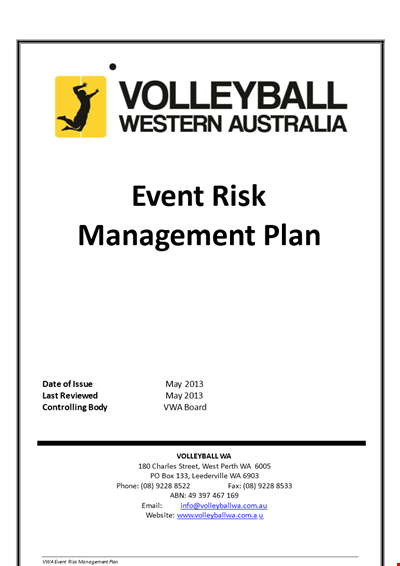
Event Risk Management Plan

Business Policy Template - Create Your Custom Policy
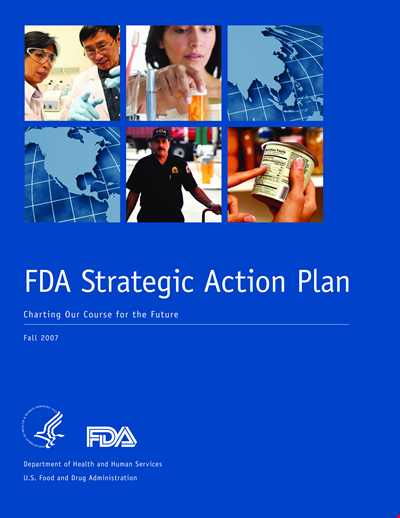
FDA Strategic Action Plan for Safety of Products

Inclement Weather Policy for Sb Policy: School Guidelines for Students and Weather

Motorcycle Policy, Safety, Service & Training - CNGO

HR Corporate Strategic Plan: Action and Engagement
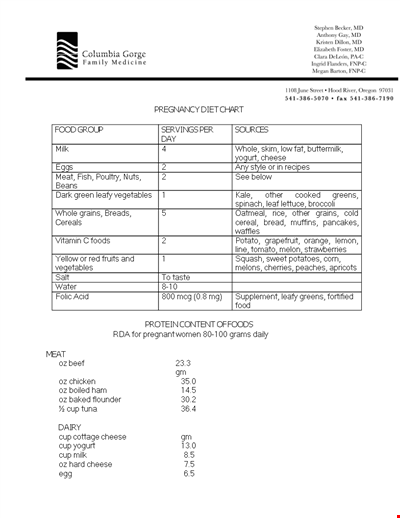
Pregnancy Diet: PDF, Medications, and Avoidance Guidelines
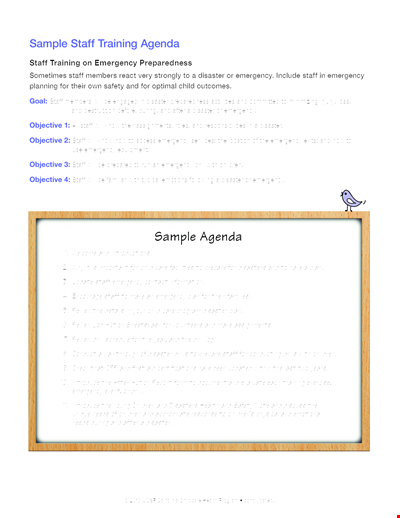
Effective Staff Training Agenda for Emergency Preparedness and Disaster Management
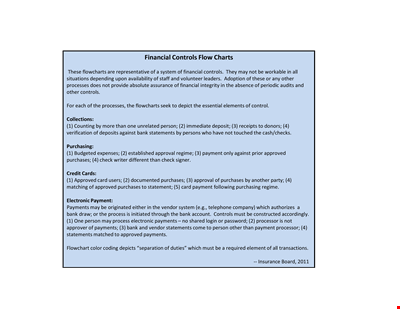
Financial Statement Controls - Streamlining Finance Workflow
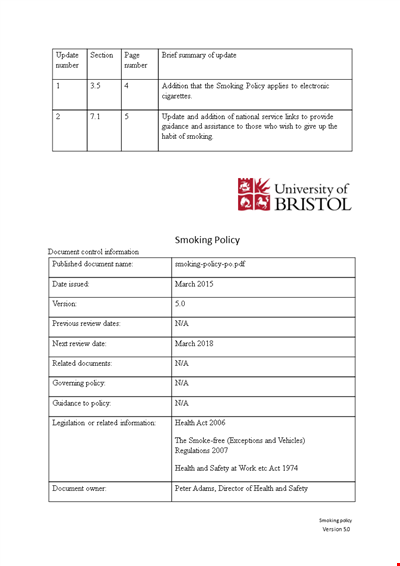
University Smoking Policy: Promoting Health and Enforcing Smoke-Free Campus

Employee Disciplinary Policy - April | Fair Hearing Process

Policy for Letter of Intent - Guidelines for Letter, Promotion, and Title for Faculty Chair
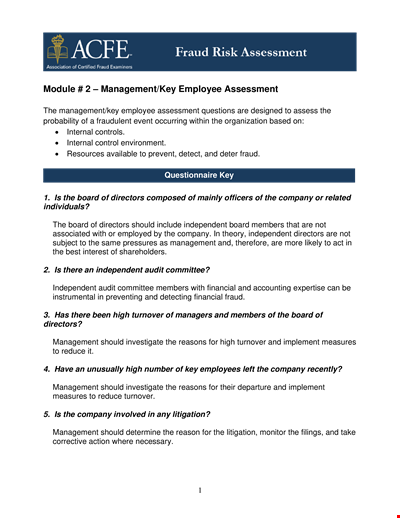
Assess Your Company's Employees and Gather Valuable Comments for Improvement
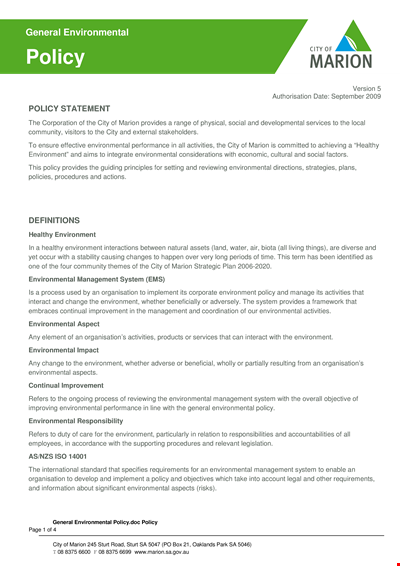
Marion Environmental Management: Your Comprehensive Environmental Policy Solution

Drug Testing Consent Agreement Form - Policy for Controlled Substance Testing at Citadel
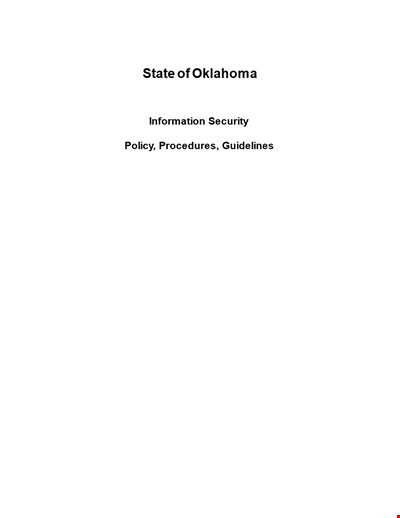
Information Security Procedures: Ensuring Agency Safety and Compliance
